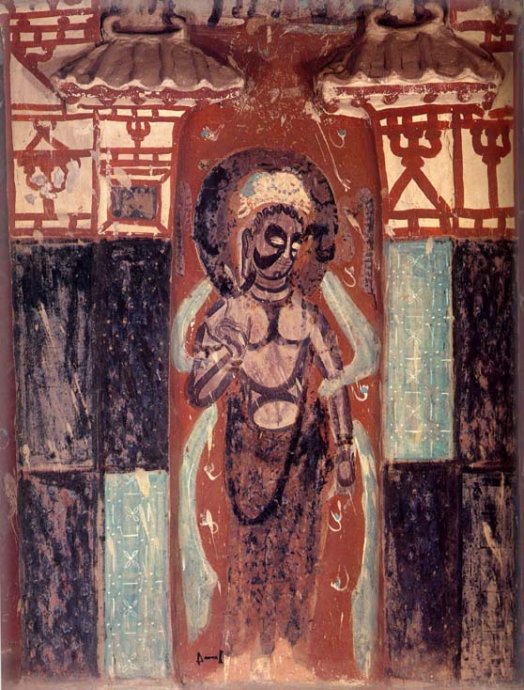Artistic evolution of Dunhuang Grottoes’ decorative patterns

The Dunhuang Grottoes in Gansu Province resemble a natural museum of architecture, colorful statues and wall paintings. Decorative patterns are rich and varied. Throughout 10 dynasties and more than 1,000 years, different aesthetic tastes and decorative features have been incorporated into the grottoes.
Generally, the distribution and patterns of decorative designs can be divided into three stages: the first reflects the Northern Liang (421-439), Northern Wei (439-535), Western Wei (535-556) and Northern Zhou (557-581) dynasties; the second reflects the Sui (581-618) and Tang (619-907) dynasties; and the third stage reflects the Five Dynasties and Ten Kingdoms (907-960) to the Yuan Dynasty (1206-1368).
During the first stage, when eastward transmission of Buddhism began, designs were mainly influenced by exotic patterns from the Western world. Combining with local artistic elements, the unique patterns of this period were formed. During this period, simple geometric lines, delicate and plain compositions, and intense, thick colors characterized designs.
The Sui and Tang dynasties were the heyday of Dunhuang decorative arts, with more patterns and plentiful forms of designs emerging. Moreover, themes of designs expanded from geometric patterns and animals to grass, flowers, leaves and plants. With more complicated compositions, bright colors and smooth lines, these designs created a sense of vitality and reflected social prosperity of the time.
During the third stage, innovations were made based on designs of the previous periods as reflected by designs of lotuses and dragons, phoenixes and other birds with heads of ruyi (a Buddhist talisman).
During the Xixia (or Tangut) (1038-1227) and Yuan dynasties, designs were influenced by the Song Dynasty (960-1279) in Central Plains, the Liao (aka the Qidan or Chitan) Dynasty (907-1125) in the North, and Tibetan Buddhism, featuring more flowers, grass and mythical creatures, reflecting the integration of cultures of different ethnic groups.
